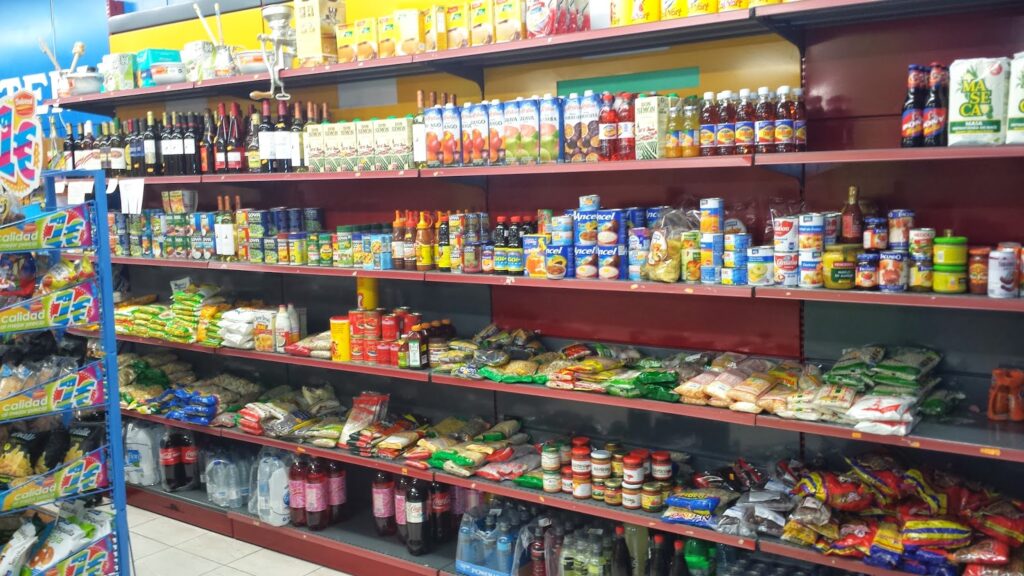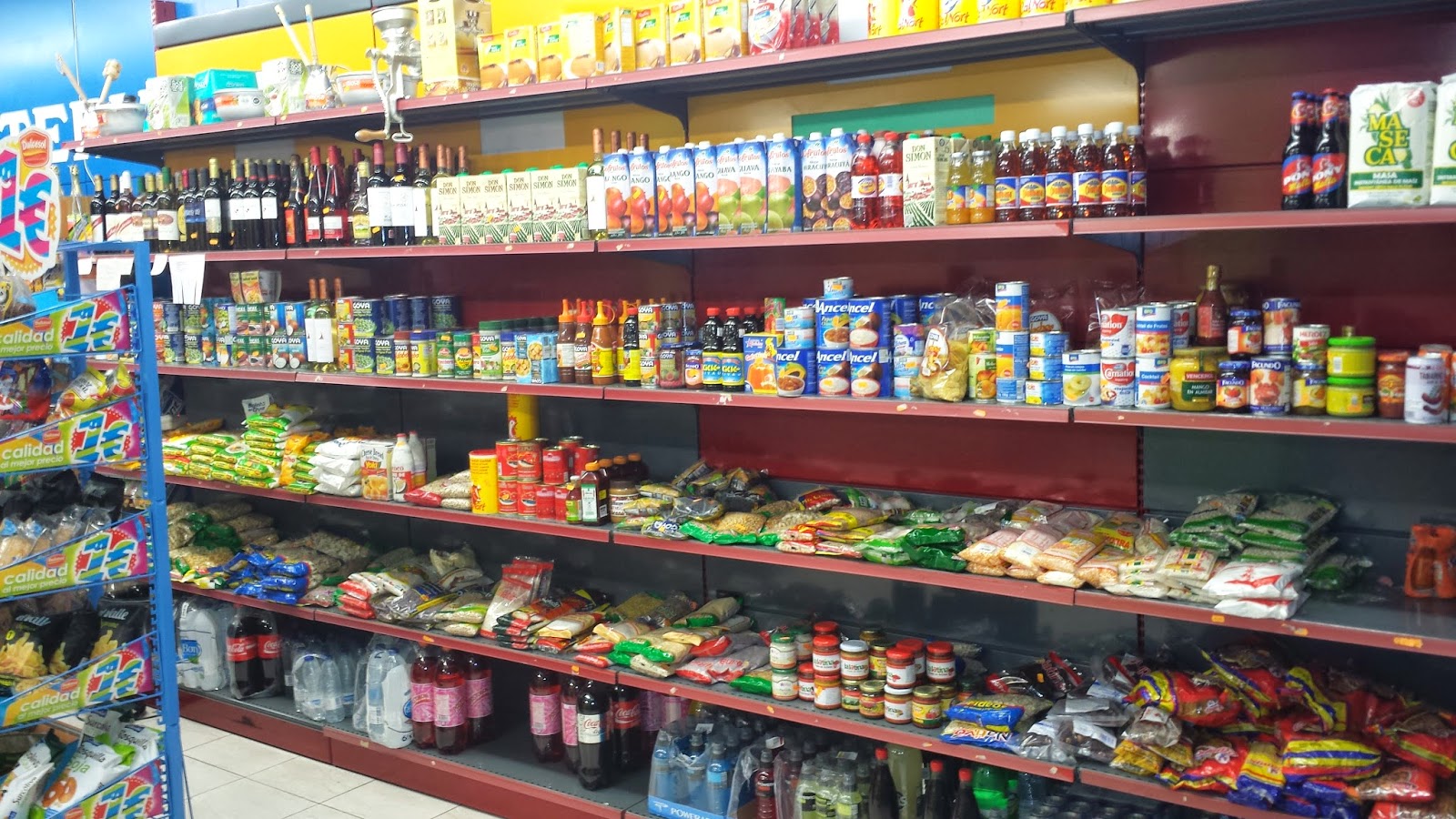
Exploring the Vibrant World of Latin Tiendas: A Cultural and Commercial Hub
Latin tiendas, or stores, are more than just retail outlets; they are vital cultural and commercial hubs within Latin American communities and increasingly, in diasporic communities around the world. These tiendas serve as cornerstones, offering a diverse range of products and services that cater specifically to the needs and tastes of their clientele. From traditional foods and beverages to unique handicrafts and remittance services, the Latin tienda plays a crucial role in preserving cultural identity and facilitating economic activity.
This article delves into the multifaceted world of the Latin tienda, examining its historical roots, its contemporary significance, and its evolving role in a globalized world. We will explore the types of goods and services typically offered, the challenges and opportunities faced by tienda owners, and the overall impact these establishments have on the communities they serve. The Latin tienda is a window into the culture, offering a taste of home for many.
The Historical Roots of Latin Tiendas
The concept of the tienda has deep roots in Latin American history. In pre-Columbian times, marketplaces served as central gathering places for trade and social interaction. These markets evolved over time, adapting to the influences of European colonization and the subsequent development of modern economies. The modern Latin tienda is a direct descendant of these historical marketplaces, retaining its role as a community gathering place and a source of essential goods. Even today, the Latin tienda often functions as a social hub.
During the colonial period, tiendas became increasingly important as centers of commerce and communication. They provided access to goods that were not readily available elsewhere, and they served as meeting places for people from different social classes. As Latin American countries gained independence, tiendas continued to play a vital role in the development of local economies, supporting small-scale producers and providing employment opportunities.
The Contemporary Significance of Latin Tiendas
In the 21st century, Latin tiendas continue to thrive, particularly in areas with significant Latin American populations. These stores offer a wide range of products and services that cater to the specific needs of their customers. Some common offerings include:
- Traditional Foods and Beverages: From staple items like beans, rice, and tortillas to specialty products like mole sauce, yerba mate, and imported candies, Latin tiendas provide access to the flavors of home.
- Household Goods: Many tiendas also carry a variety of household goods, including cleaning supplies, kitchenware, and personal care products, often sourced from Latin American countries.
- Remittance Services: A crucial service offered by many Latin tiendas is money transfer, allowing customers to send funds to family and friends in their home countries.
- Phone Services: Prepaid phone cards and international calling plans are also commonly available, facilitating communication with loved ones abroad.
- Cultural Products: Latin tiendas often sell cultural products such as music, movies, books, and religious items, helping to preserve and promote Latin American traditions.
- Handicrafts: Some tiendas also offer unique handicrafts and artisanal products, showcasing the skills and creativity of Latin American artisans.
Beyond the products and services they offer, Latin tiendas also serve as important social and cultural centers. They provide a space for community members to connect with one another, share stories, and maintain their cultural heritage. [See also: The Role of Community Centers in Preserving Culture] These stores often host events and celebrations that bring people together, such as holiday gatherings, musical performances, and cultural festivals. The Latin tienda is often the first place people go when they move to a new area.
The Challenges and Opportunities Faced by Tienda Owners
Running a Latin tienda can be both rewarding and challenging. Owners face a variety of obstacles, including:
- Competition: Latin tiendas often compete with larger grocery stores and chain retailers that can offer lower prices and a wider selection of products.
- Economic Fluctuations: Economic downturns can significantly impact sales, as customers may have less disposable income to spend on non-essential items.
- Regulatory Compliance: Tienda owners must comply with a variety of regulations related to food safety, licensing, and labor laws, which can be complex and time-consuming.
- Supply Chain Issues: Sourcing products from Latin American countries can be challenging due to transportation costs, import duties, and other logistical hurdles.
- Language Barriers: In some areas, tienda owners may face language barriers when dealing with suppliers, customers, and regulatory agencies.
Despite these challenges, Latin tiendas also have significant opportunities for growth and success. Some of these opportunities include:
- Niche Market: By focusing on specific products and services that cater to the needs of the Latin American community, tiendas can carve out a niche market and attract loyal customers.
- Personalized Service: Tienda owners can build strong relationships with their customers by providing personalized service and creating a welcoming atmosphere.
- Community Engagement: By actively engaging with the community and supporting local events, tiendas can enhance their reputation and build goodwill.
- Online Presence: Developing an online presence through social media and e-commerce platforms can help tiendas reach a wider audience and increase sales.
- Collaboration: Partnering with other local businesses and organizations can help tiendas expand their reach and offer new products and services.
The Evolving Role of Latin Tiendas in a Globalized World
As the world becomes increasingly interconnected, Latin tiendas are evolving to meet the changing needs of their customers. Many tiendas are now incorporating technology into their operations, using point-of-sale systems, online ordering platforms, and social media marketing to improve efficiency and reach a wider audience. Some Latin tiendas have even started offering delivery services, bringing their products directly to customers’ homes.
Furthermore, Latin tiendas are increasingly catering to a more diverse customer base. While they continue to serve the needs of the Latin American community, many tiendas are also attracting customers from other ethnic backgrounds who are interested in exploring Latin American culture and cuisine. This diversification can help tiendas expand their market share and increase their profitability. The Latin tienda is an important part of the economic landscape.
The rise of e-commerce has also created new opportunities for Latin tiendas. By selling their products online, tiendas can reach customers around the world, expanding their market beyond their local community. However, competing with large online retailers can be challenging, so tiendas need to develop a strong online presence and offer competitive prices and shipping options. [See also: Strategies for Small Businesses to Compete Online] Latin tiendas that adapt to the global market will thrive.
The Impact of Latin Tiendas on Communities
Latin tiendas have a significant positive impact on the communities they serve. They provide access to essential goods and services, create employment opportunities, and contribute to the local economy. In addition, they serve as important cultural centers, helping to preserve and promote Latin American traditions. The Latin tienda is central to the fabric of the community.
Tiendas also play a vital role in supporting immigrant communities. They provide a sense of familiarity and connection to home, helping immigrants to adjust to their new surroundings and maintain their cultural identity. Tiendas often serve as a source of information and support for immigrants, providing assistance with everything from finding housing and employment to navigating the legal system. The Latin tienda provides a safe place to connect.
Moreover, Latin tiendas often contribute to the revitalization of underserved neighborhoods. By opening businesses in areas that have been neglected or abandoned, tiendas can help to create jobs, attract investment, and improve the overall quality of life for residents. Latin tiendas are a positive force in many communities.
Conclusion
Latin tiendas are much more than just stores; they are vital cultural and commercial hubs that play a crucial role in preserving cultural identity, facilitating economic activity, and supporting communities. While tienda owners face a variety of challenges, they also have significant opportunities for growth and success. By embracing technology, engaging with the community, and adapting to the changing needs of their customers, Latin tiendas can continue to thrive in a globalized world. The Latin tienda is a testament to the resilience and adaptability of Latin American culture. The enduring presence of the Latin tienda is a cultural and economic statement. The Latin tienda is here to stay, adapting and evolving while retaining its core values and purpose.

